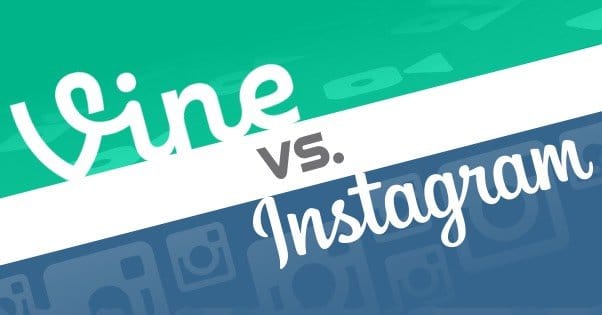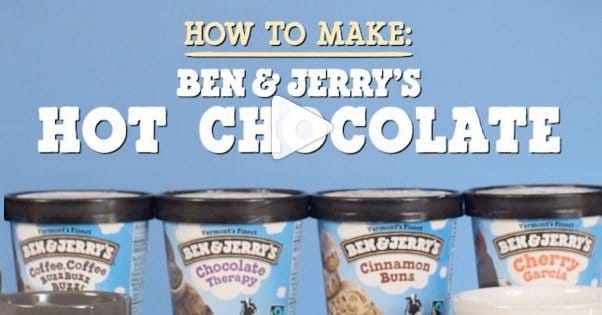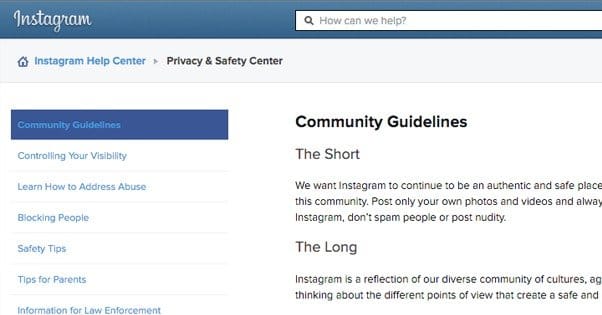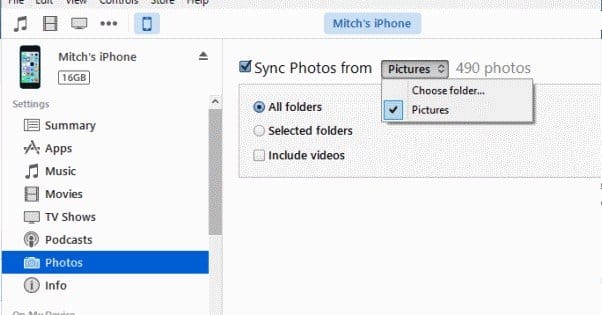 Written by ContentPowered.com
Written by ContentPowered.com
Vine took the lead in 2012 as the first major microvideo site on the web, and Twitter instantly recognized its potential and acquired it before its official release. Since then, though, Instagram’s slightly more robust offering has taken the world by storm. Instagram Video doesn’t have the same ring to it as Vine, but it has a bunch of other advantages. Let’s look at the two, and then how to succeed with Instagram.
Instagram or Vine?
Vine limits their videos to 6 seconds in length, fitting the Twitter-style microblogging aesthetic. Instagram videos are made to fill the same niche with a slightly more robust resource, a limit of 15 seconds in length. It should be noted that 15 seconds is roughly the length of the average TV commercial, which makes them feel much longer.
Instagram has more users than Vine, which isn’t as directly integrated into Twitter as Instagram’s video is to their site. Vine’s growth has also slowed in the years since Instagram introduced video.
Instagram is owned by Facebook, which gives it access to all of the Facebook benefits and users. Vine is owned by Twitter, which is also large and active, but not quite on the same level.
Instagram’s filters work on videos as well as on photos, and the native editing tools are better. However, for most savvy brands, this shouldn’t matter; you’re producing video externally and importing it to Instagram or Vine, rather than shooting it on a phone, editing it on a basic device, and uploading it.
Vine videos loop automatically, allowing creators to make seamless loops. Instagram’s do not by default, and not seamlessly.
Overall, for a savvy brand, Instagram has more to offer. That’s not saying you can’t use Vine – and in fact most of the tips in this post will work with Vine as well – but if you’re going to choose one platform, Instagram is the way to go.
Examples of Excellent Video Marketing
Before we discuss how to make good videos, how to upload them, and how to succeed in promoting them, let’s take a look at some successful videos you can use for ideas. I wouldn’t try to copy any of them, but they let you see some of the things that are possible on Instagram video.
- This wedding video is a photographer’s slideshow, showcasing their photography ability through the tender and emotional moments of a brief wedding. It has no words, just stock music, and proves you don’t need an elaborate script to succeed.
- This advertisement for Ben and Jerry’s takes weather into account to bring a “twist” to a seasonal treat; putting ice cream in hot chocolate, or making hot chocolate out of ice cream. It’s really unclear what their intention was, but the result is delicious and works to sell my some ice cream regardless.
- LEGO kills it with a one-two punch of kid attraction between LEGO toys and Minecraft. Wordless, mostly using sound effects, it’s a brand showcase that hits all the right buttons for an entire demographic.
- A whole bunch more you can browse through at your leisure.
There are a lot of different perspectives you can take. I’ll cover that more when we talk about generating ideas for videos. First, though, let’s look at the restrictions you’ll be working with.
Instagram’s Restrictions
Instagram’s videos max out at 15 seconds, but they don’t have to be that long. They can be as short as 3 seconds, which allows brands to cross-post videos between Vine and Instagram easily.
Instagram’s view count is distinct from Vine’s. Instagram’s only counts one view per person per session, no matter how many times you loop it. Vine just tallies up loops, and in fact will display them in real time. View counts also only show up on recent videos; videos posted before November 19 2015 don’t have view counts.
Videos are subject to all of the same rules for community guidelines as photos. That means no violence, no pornography, no hate speech, nothing suggestive, and nothing that is the intellectual property of someone else. Read more about it at the link.
Videos can have filters, captions, and locations added to them before you upload them, if you wish. They can also have stabilization added if they were shot with certain cameras, usually phone devices.
Shooting and Sharing
The process and shooting and sharing video for Instagram can be as simple or as complex as you want it to be. You can, if you want, shoot a clip with your phone, upload it to Instagram, and be done with it. You can also take that clip, edit it, add a filter, and upload it as a slightly more polished product. Alternatively, you can go all the way to the other side of things and take video with professional cameras, edit it with professional tools, and upload it indirectly.
It’s very easy to upload a video to your phone; all you need is to plug it into a computer and send it over. On Android you can even do it through Google Drive, just put the video on the cloud and download it on the phone. Uploading a video is similarly easy, you just tap the video icon and tap the box to go to your video library. Choose a video and click to upload it.
If you’re editing a video outside of the phone, you need to know that the video has to be a square resolution and aspect ratio. It could be 100×100 or 2000×2000, so long as it’s square, Instagram will recognize it.
Now, how do you come up with ideas for videos? Part of it will tie into your brand marketing. You can extend your TV spots or your print ads aesthetically into videos. Here are some more specific ideas.
- Record short “how it’s made” videos about how your products are created or produced. This is especially valuable for food items that can be portrayed in recipe form. It’s also good for complex machinery, because people like zen-like views of complex tools at work.
- Show a backstage look at an event you’re hosting or attending. Inside looks where users can’t normally reach are always great.
- Show clips of a typical day at your office. Note: this doesn’t have to actually be typical, since the standard office cubicle is boring. Feel free to spice it up, either with odd happenings (like the Buzzfeed guy on the hoverboard) or surreal happenings.
- Show how-to videos that explain how to accomplish something with your product or service, or even just something that would be relevant to your audience as a whole.
- Show your products in action, or even just in an aesthetically pleasing layout, like many of the product showcases in the link of videos up top.
- Showcase user-generated content, either with user submissions or with direct interviews you host in a physical location.
- Post cryptic teasers to hint at something coming down the pipe, as early promotion for your next big deal, sale, or product.
- Post responses to trending subjects. Oreo’s famous lights out superbowl Tweet is a non-video example.
- Perform some crazy feat. Anything that breaks records or looks like it’s expensive or took a lot of setup works here. So do astonishing physical feats.
In the end, ideas are your job. Brainstorm with your employees, hire video producers, or just find a viral star and offer them a job. It’s up to you where you find your content.
Tips for Instagram Video Success
There are a lot of tips that can go into producing quality videos and achieving success on Instagram. I’ve compiled the best ones here.
First of all, make sure your videos are produced for Instagram. Users can tell when the video isn’t created for them, like it’s a clip from YouTube or something that isn’t the right aspect ratio. It lessens the experience.
Make sure your video is perfectly serviceable without sound. This is why so many brand videos just have sound effects or background music. Instagram videos start muted on mobile and are often muted in desktop views, so users aren’t disrupted by sudden sound. Many never turn the sound on. If text is necessary, use overlays or captions.
Make sure your video has an immediate impact. Even if a video is only 15 seconds long, Instagram uses have a much shorter attention span. In fact, many of them will never watch past the first 2-3 seconds if the video doesn’t catch their attention.
To further make sure you’re catching attention, customize your video preview frame. This is the frame that shows up as the preview image for your video in the Instagram feed. Make sure it’s something interesting and worth clicking on. All of the rules that apply to Instagram images apply here, so make sure to read up on those.
Try to make use of looping, even if not everyone sticks around to experience it. Infinite smooth loops can rack up exposure to your brand, even if they don’t count up video views the way they do on Vine.
Learn the culture of Instagram. They tend to like more artistic and less advertorial content, for one thing. Instagram is a platform where everyone is a content producer, and you need to treat them as such. Don’t disrespect people with your videos or ever imply that you’re better than they are. For one thing, there are exceedingly amazing producers on Instagram. For another, how would you feel if someone took it as a challenge and out-did you with a cameraphone video?
Remember that you’re curating a brand role, not just producing content for an impassive audience. You’re bringing up a conversation, and that means accepting and featuring user content is excellent. Everything is open-ended, everything makes your brand feel like the hip friend. Even brands like Lowes, not known for their hip presence amongst youngsters, are able to grow a great following with simple projects and how-tos that encourage DIY. They aren’t focused on supplies; they’re focused on you and how you can improve your life at home. It’s a positive brand association and it’s a great way to circulate content.
Remember to make sure to write captions, include hashtags, and occasionally even tag relevant people in your video descriptions. They work just like photos, with all of the same limits, so take them into account.
Don’t over-do it with video. Instagram can support numerous posts per day, but video should be like a special treat for viewers, not the standard fare. Remember, videos are much larger in size than pictures, and most people browsing Instagram are doing so on mobile devices. Mobile devices take time to download large files, and many users are on slow connections with data caps. They’ll have to be really invested to want to see your video. If your feed is full of videos, they don’t want to waste their time or their bandwidth; they’ll just skip you.
Incentivize people following you. Some people like to offer direct rewards, either coupons or weekly giveaways to new followers. You can also run contests, even ongoing contests, requiring user submission as an entry method rather than just a follow. Instagram, as I said, is a platform full of content creators. They’ll be happy to submit to be featured and to win a prize.
Always be aware and ready to seize the moment. You can always take a lot of source video with a mobile device and edit it for better production value later. You can also draw inspiration from the world around you and use that to stage events later on. Keep your eyes open; you never know when opportunity for the next viral video will strike.
Always strive to produce the best videos you can, even if they feel pithy and generic. Not every video is going to be a hit, but it’s a lot harder to succeed if you’re not trying to produce hits from the start. If the video isn’t good enough, you’ll just need to not post it, that’s all.




